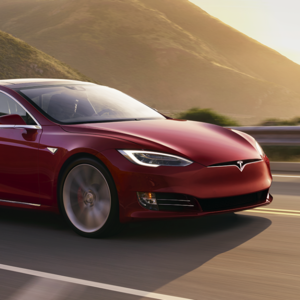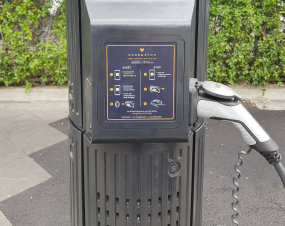This is a guest post by Gerald Fisher from Melbourne electric scooter startup, Raine Scooters.
The way people are travelling is changing in Australia. Ride-sharing and short-term car rental have made it easier for people to get around, especially in built-up metropolitan areas where car ownership isn’t always practical.
But not all electric vehicles have four wheels and many smaller alternatives have become a popular option for ‘last mile’ transportation. It’s not uncommon to see people moving around cities on electric scooters, bikes and even skateboards.
5 strange developments in electric mobility
Melbourne-based start-up Raine Scooters have been leading the charge. Last year Raine smashed its $73,000 crowdfunding goal in just 43 minutes, eventually raising over $600,000 with an additional $500,000 in seed funding from Blackbird Ventures to help bring their electric scooters to market.

Electric scooter market
The electric scooter industry is now worth $AUD 59 billion, with the craze really taking off in 2017 when companies like Bird and Lime started breaking into the US market. Since 2018, five e-scooter companies have emerged and raised over $US150 million of capital in Europe alone.
Demand for e-scooters is driven by environmental controls, with shared bikes and delivery companies looking for cheaper and more efficient ways to transport goods. It has been proven that e-vehicles not only ease traffic congestion but produce lower carbon emissions, which should be prioritised as our cities grow.
But despite this high demand, Australia has struggled to keep up with other countries with our outdated regulations and a lack of adequate infrastructure.
Can electric scooter rental work in Australia?
Brisbane’s e-scooter share system trial
Brisbane’s trial of Lime scooters has moved thousands of residents and tourists since November 2018. It only costs $1 to unlock the vehicle, and 38 cents a minute to ride, making it cheaper than catching public transport for that ‘last mile’ transport solution. E-scooters have made Brisbane’s steep slopes much easier to traverse for commuters around the city.
But Lime isn’t alone in the scooter-share business. Neuron Mobility offers scooter-share around the Asia-Pacific region and now has 600 scooters working around Brisbane . Their scooters use “geo-fencing” technology to prevent them being ridden in areas where e-scooters aren’t permitted. Integration of e-scooters into more Australian cities can help create safer, more sustainable and liveable cities with better mobility options.

Australia’s changing electric scooter laws
Australian e-scooter laws differ from state to state and pressure is mounting on state governments to adapt to the new technology. Until recently, e-scooters were completely banned in the ACT. However, with such high public demand, they are now legal to be ridden at a maximum speed of 15 km/h on footpaths, and up to 25 km/h in all other permitted locations.
A 2018 RACV survey found 80% of Victorians would consider using an e-scooter and almost 60% would use one instead of a car. With the growing popularity of e-scooters, roads may need to be redesigned for the safety of riders and commuters.
Redesigning roads to accommodate electric vehicles
More and more types of vehicles are competing for space on the road and the question of safety needs answering. This is something infrastructure ministers in every state will have to tackle as laws on electric vehicles start to change.
The kerb has become a competitive area — especially in big cities — with cars, taxis, bikes, ride sharing, delivery trucks, food delivery vehicles, e-scooters and e-bikes all competing for space. In the future, autonomous vehicles will be added to that long list.
Seattle is one of the leaders in kerb management after identifying the six key functions of the kerb and how they could manage them. Tech start-ups in California have developed tools that provide data on e-scooter and e-bike share parking.
Cities will need to make the transition from parking cities to pick-up and drop-off cities, but to do this city planners will need to think of strategies to manage kerbs with the emergence of these new modes of transport.
Making e-scooters safer
Not only do roads need to be safer but electric scooters themselves need to be designed to ensure the rider’s safety. Raine co-founder Michelle Mannering says ensuring e-scooters have strong lights and better brakes would fix most of the issues people are having with e-scooters at the moment, which is why those features have been a major focus for Raine.

Raine’s e-scooters are equipped with ABS, traction control and personalised headlights. After the success of their Kickstarter campaign, the Raine team has big plans for the future designing new models and improving old ones.
Despite their name, Raine’s future looks anything but gloomy.





